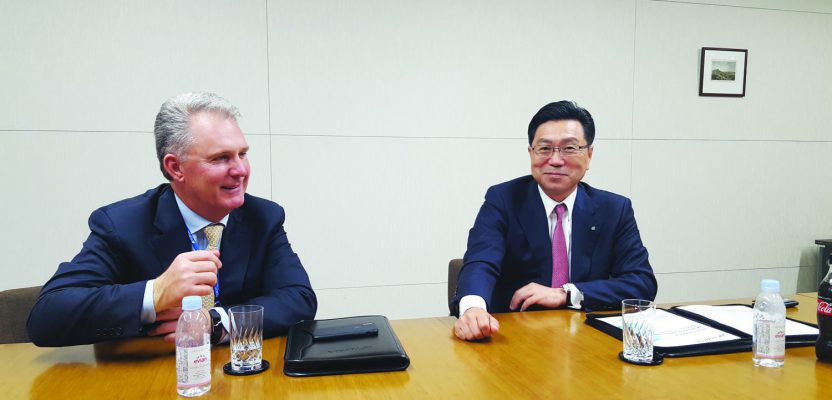A joint interview with Topcon president and CEO, Satoshi “Steve” Hirano, and Topcon Positioning Systems president and CEO, Ray O’Connor.
I recently had an opportunity to sit down with Satoshi “Steve” Hirano, president and CEO of Topcon Corporation, for a candid interview at the company’s global headquarters (THQ) in Tokyo. The timing of this visit to Japan for tours of two Topcon factories (see “A Fine Line”) was serendipitous, as Ray O’Connor, who as the president and CEO of Topcon Positioning Systems, Inc. (TPS) is mostly at the TPS headquarters in Livermore, California, but was in Tokyo for meetings at THQ.
Topics covered in this rare joint interview ranged from “i-shoku-ju” to triumphs and challenges from Topcon’s history, golf, a drowning pipe laser, and visions of how the company proposes to meet present and future demands. These two visionaries have worked together for 25 years and have changed the face of Topcon—and, in many ways, the industries they serve. I could sense not only mutual professional respect, but a genuine friendship between these two, as well.
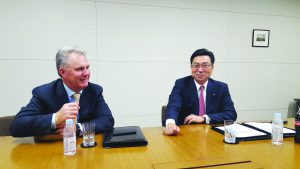
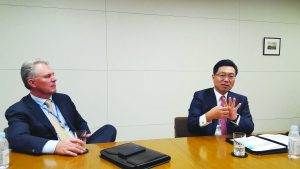
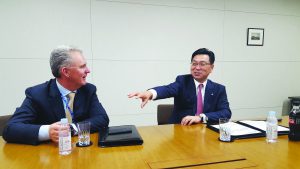
Q. There is a global infrastructure boom; demand is high, and today’s generation wants smart and green infrastructure. Legacy solutions are not handling these demands, and people do not seem to recognize just how profound these challenges are. How is Topcon viewing this?
O’Connor: If you look at the construction industry, all the data, lack of IT, lack of automation, then you can see that construction productivity—in comparison to standard manufacturing or even the precision agriculture field—is way behind. Have you looked at the stats? Shocking. We are dedicated to solving these problems and improving productivity.
Hirano: We create solutions for three different business fields that have the same problem: they are way behind in IT use and have low productivity. The technology used compared to the automotive or productive high-tech industries is far behind in implementation. They have a lot of opportunity to grow by using our technology.
Q. I just visited your new production line for total stations in Yamagata. The new line is impressive, as are the improved productivity numbers the tour hosts showed me. But did you consider outsourcing?
Hirano: Total stations, surveying instruments, have a very long history. This is high technology, but also a very mature type of product, not the same kind of completely new, advanced technology compared to that in machine control and automated agriculture. With total stations being so mature, we have a lot of experience in developing and manufacturing these instruments. To increase productivity and capacity there two ways we could choose. One way is to bring the manufacturing to Asia or China or wherever to lower manufacturing costs. That is one choice. But I chose to manufacture in Japan.
The reason is that without engineering, without engineering design, if we separated design and manufacturing to only focus on cost, we would have to compromise so much to compete with Chinese products. [This is] why I decided to keep production in Japan, to improve the efficiency, high quality, and full functionality made affordable and [not just low] priced.
O’Connor: That leverages our capabilities and pushes us to perform because there are people making copies of products [in other places], as you know, and of our competitors, but to have the advanced capabilities puts pressure on us to perform. And we have. For example, we kept the production of [GNSS] and some of our precision agriculture and machine control in-house in [Topcon] Livermore; we did the [economic] analysis, and that worked out as being just as cost-effective as outsourcing but with much better quality. (Read xyHt’s 2016 interview with O’Connor and tour of the Livermore facility at: www.xyht.com/aerialuas/the-long-drive/)
Q. We attend a lot of construction and AEC tradeshows and hear a lot from businesses attending. They tell us they have been in a boom for half a dozen years and are having trouble finding enough people to do the work—more work than we can handle. Folks say there is much talk about “spatial IT” as being the answer to productivity and meeting those demands, but they also say, ‘What can Spatial IT do for us right now?”
O’Connor: The low-hanging fruit was the machine control business, bringing the positioning technology directly to the machines and automating that process. It did several things: it does not eliminate the human from the machine, but it takes the skillset to get the results more and more where a lot more operators can get the perfect grade—where before you had to rely on a limited pool of those rare operators who had perfected their skills.
The other major areas, moving into BIM, trying to automate that process—it is a very tough one. It is a manufacturing process, but nearly every job is custom, every structure or project can be very different. It is different when we build roads bridges, buildings, and pipelines—those have been easier to automate. The biggest challenge as we move forward is how to really automate that same process in vertical construction.
One key problem is how few engineers are spending quality time with the people who are doing the work in the field to make sure they have efficiently organized the transfer of data. It is tough. The collaborations we’ve done with Bentley, Autodesk, and all of the software companies is doing more of this: open communications and flow of data between engineering and construction. We did a huge project at Frankfurt airport, a repaving job with Wirtgen, and the interesting thing was that engineers and the people who were doing the work in the field all working together for years had never met each other; [they were] communicating by phone, email, and transferring files but not spending time together. So constructioneering (read www.xyht.com/constructionbim/workflow-constructioneering/) is really helping us with that. The project was a great success and was an excellent implementation of our automation in the paving process,
Hirano: 40 years ago, I was a mechanical engineer, a design engineer. At the university the practice taught was to design and hand the design to a drafter. So then, as soon I joined Topcon as a mechanical engineer, I used CAD and computers for the design, but at that time there was no digital link to the manufacturing department. [All was] designed by CAD then printed out to hand off to manufacturing. Skilled worker read the plans and start manufacturing. This has all changed now, but in the construction field the process is like that of 40 years ago. Spatial IT is bridging that 40-year gap for construction. Digitally aligning engineering in real-time to construction is what the automotive industry, that implemented this long ago, calls “concurrent engineering.”
Q. Is see that Topcon is organized into three areas: eye care (healthcare), smart infrastructure, and positioning, but that R&D is combined. Are there benefits or overlaps between the R&D for each of these?
Hirano: Yes, but some are a very different technology, like optical instruments for eye care, so different than say machine control. However, collecting the 3D data by surveying instruments, a scanner, or GNSS, once you get the 3D data to analyze, to edit, there are similar sciences and techniques to that which can be used for eye care [tomography]. The headquarters for R&D is in Japan for both eye care and survey business. Probably not as much is shared with the GNSS and machine control [R&D], but it is all “optomechatronics.” [ed. The term originated in Japan and is often pronounced “Oputoerekutoronikusu.”]
O’Connor: When I first joined Topcon 25 years ago, they used that term quite a lot: optical, mechanical, and electronics in a device working as one. Cameras, retina cameras, and devices for examining the human eye and the total stations used a lot of similar core technology.
Q. What newest solutions have had lot of impact, particularly in infrastructure, over the past few years?
O’Connor: The machine control business is booming. The adoption rate to the OEMs has helped a lot. Robotic total stations are being adopted in the BIM market, a whole new market for total stations. Scanners are big in the BIM market. The biggest has been the positioning technology by contractors—the heavy civil and highway contractors. You can expect it to continue because of the adoption rate. When you have Komatsu, Caterpillar, Deere, and others putting this equipment on their machines, it’s changing the environment of how many people are using the core technologies.
Hirano: We just purchased a company called ClearEdge3D that makes software for the vertical construction market; that is definitely an area ready for rapid adoption. This is a very important core technology, not only for identifying where everything is in the building—the steel beams and columns and everything else—but also in helping you determine things like where you should set up the instrument to get maximum view for layout. To be able to view as many features as possible for each setup: a lot of uniqueness and optimization. I think you will see a lot of growth in that area.
O’Connor: We have had growth in that area because it is a new market for us.
Q. I know you can’t talk openly about plan specifics, but in general what are the areas you are concentrating on to keep ahead of this infrastructure wave?
O’Connor: I would say to you that the biggest challenge is the support and distribution of the products; the products are obviously very good and so is the demand. Usually we have a whole product plan and portfolio based upon the feedback of how to improve what is going on at the job site. Keeping up with the demand—everyone like the heavy equipment companies that implement our solutions, like Komatsu, Caterpillar, etc.—their demand is extremely high because the market is strong.
Hirano: And finding people to do it, to learn and adopt the new, highly productive solutions. For example, with drones assisting with surveying, we are seeing quite a bit of growth in that area. It is quite specialized to do some site surveys in minutes or hours instead of days. You can’t catch everything from the air, but you can do a tremendous amount and then go in to augment with scanners like our IP-S3s. That is a big change, and the adopting is specialized, but you are going to see mass data and the ability to connect a scan, a drone, a total station, and GNSS. These machines moving all that data—it’s being collected into the cloud. All that data being analyzed and creating models: that you could not do before. And as we connect the engineers with the people in the field, the engineers become more knowledgeable about what the capabilities are.
Q. “i-shoku-ju”: how does that concept fit into the Topcon business model and mission?
Hirano: All areas—eye care, agriculture, and construction—they are huge markets. But not yet with the best efficiency; automation has not matched that of traditional manufacturing, like automotive. To give perspective though, consider that the investment in the automotive industry is about $1T USD annually. But agriculture is at $6.5T, healthcare is at $7T, and infrastructure is $8T annually: such an area for potential growth and improvements through automation.
These areas are the essential elements for life: good health, food, and shelter; but there exist social issues. We have our [slogan], “Topcon for Human Life.”, that implies that Topcon contributes to resolve those social issues for better life.
The “I-shoku-ju” concept has been very, very important for two elements: the investors and employees. When I started as president five years ago I found that many employees cannot say who Topcon is, what are we about. Some engineers and sales and in charge of the positioning business, or eye care business—they talk about their business, but they cannot speak to Topcon [as a whole]. That is why I had to create some idea, some concept to address what we do, the work we do. This gives them a good feeling about the work we do, that we are doing something good.
O’Connor: Infrastructure and agriculture: we are going from 7 billion people soon to 9 billion people on the planet. How are you going to feed them, house them, transport them? If we have 9 billion people, we have 18 billion eyes—the gateway to human health—so much can be gauged about health from reading the health of an eye. You will see more of that: we believe it is a great growth area (medical optics) for our business. Then the agriculture: the earth is not expanding, yet we have to grow more food in arable land that is disappearing because of urban spread.
Hirano: If you think about the core message, we now say “Topcon for Human Life.” Since we now have a clear message, more employees want to join Topcon. Also, the employees in the company already, they share this message to their relatives and with pride.
Me: This is the same reason why xyHt likes to do factory profiles and engage with the manufacture’s engineers and leadership: to give the end users a connection with the people who design and build the solutions they use—to make them feel like they are part of a team. I noticed the display in your lobby. How did that come about?
Hirano: The showroom you saw, that is a message to our employees, customers and all of our associates and stakeholders, a concept of a whole room to show the business and reason why, not just the products but how the products are used, with AR and cloud elements.
Q. You guys have worked together for 25 years. That goes right to the beginning of TPS. How did you meet?
O’Connor: I used to work for a company that manufactured construction lasers. In 1992 at Bauma [a huge international construction show] over in Germany I was walking the floor, and lo and behold there was a Topcon booth with this new RL-H construction laser. There was an engineer standing there beside it so of course I started asking all kinds of questions. I could tell by the design this was going to be a whole family of products; you could tell by the moldings that it was going to be more than one instrument. So, I was asking the engineer about what their plans were.
Hirano: The engineer was me. I called back to Japan and was so worried that secrets had been hacked. I wondered if someone had leaked the information, but of course Ray had simply figured it out.
O’Connor: I went back to the laser company I was working for and said that Topcon has made the right moves and we better partner up with a company like that or Topcon will run over us. The management didn’t believe that, and 12 months later I went to work for Topcon because I saw there was somebody with the resources to really realize this idea. We revolutionized the business and grew very quickly. The first thing we did when I interviewed to join Topcon, I said if I join we have buy this little company in California called Advanced Grade Technologies. Steve was super supportive.
Then about two years later Steve came and lived in California for seven years. The HQ (of what is now Topcon Positioning Systems] was in Pleasanton; and we grew a large facility and then relocated to a new facility in Livermore [where GNSS products are also produced].
Hirano: In that part of the world we are connected to Silicon Valley and the development of tech that goes on there. Right next door is Livermore labs, the largest grouping of PhDs in the world. Also, in 1993 when Ray joined he wanted to expand beyond survey instrument marketing and create a new distribution network for the lasers in construction and surveying via the dealers.
Q. Where there challenges along the way?
O’Connor: A funny story: we were going to make pipe lasers for alignment; for pipe lasers we had an OEM deal but ultimately Topcon is a manufacturer, so we were going to make our own product. I joined saying okay, we are going to make a pipe laser—it is going to be really neat: internal batteries, laser diode, digital operation, extremely compact, very unique for the market. We need to make that, but it has to operate inside a manhole when it rains—and pipe is laid uphill. So, it has to be hermetically sealed because it will be flooded at some point in time.
Engineering sent out this pipe laser. There was a large company up in Boston, and the client was a pretty rough individual, pulled no punches. When I brought the pipe laser—this beautiful pipe laser—he said, Is it waterproof? Sure, I said. He had his office right behind his house and had a swimming pool, so he threw it in the pool—it started bubbling. It sank. I said, give it to me I’ll be back in a year. We went from that product that had a lot of issues to a product, the TP-L3, that revolutionized the pipe laser business, and we eventually gained a dominant market share with that product.
Hirano: That was the great thing about the relationship. Ray would take care of the marketing to grow the business, and we would provide the right products. A very successful growing of the business.
Q. You are both avid golfers. Who is the better golfer?
Hirano: Ha ha. I tried to beat him once and could not break 100.
O’Connor: When I first joined Topcon, Bob Iguchi [who was a president of Topcon America, also had many roles in Topcon in his long career with the company] took me golfing, and people asked when I got back, “Did you let him win?” I said, “No, the day you let someone win, they will not want play against you again.”
Hirano: That is a different philosophy, and I think that is a great thing about the way Ray and I—and Topcon—approach business. We are competitors, we love to compete whether it’s golf or business, but very fair and sportsmanlike. If we lose we go back and analyze why we did and prepare for the next time. A great core in Topcon. We love to go out and compete and play the game against the competition.
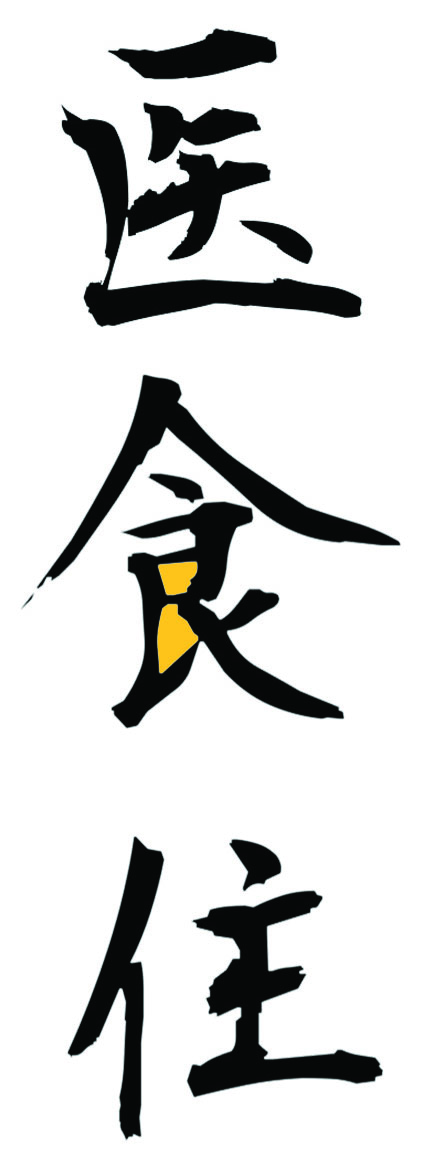
Q. I read your company document “The Topcon Way” [a guide to company philosophy, employee and business standards, and ethics]. One section stated that the company will never denigrate another company’s products—no negative advertising. I see that there is generally a lot of mutual respect in the geospatial industry, though sadly some businesses on the fringes fling a little mud.
Hirano: You have to be able to get up and face your employees, face your family, face all the people you work with, face your customers. We love to win but would never do anything that is unethical in order to win.
O’Connor: I needed to find a company that would not just play to win at any costs. The name on the outside of the building does not say O’Connor, it doesn’t say Hirano, it doesn’t say Iguchi, it says Topcon.
Hirano: We have created the word, “Topconian”; it is our nationality during our working time. That is who we are and how we do business.
“i-shoku-ju”
Healthcare-Agriculture-Infrastructure: three line-of-business areas under the Topcon global umbrella. There is a Japanese phrase I heard many times while visiting Topcon’s factories and headquarters in Tokyo and during the joint interview with two if company’s top leaders: “i-shoku-ju” (pronounced “ee-sho-ku-joo”). This phrase is commonly used in Japan to describe three fundamental elements of human life: “i” to be attired, “shoku” to eat, and “ju” to dwell: clothing, food, and shelter. Topcon has adapted this phrase through a play-on-words … more of a play-on-Kanji characters.
This original phrase is expressed by three Kanji characters, one for each of those elements. But there is also a different Kanji character (with the same pronunciation as “i”) that means “healthcare.” Topcon has taken this play on words (or play-on-Kanji) as a phrase that describes Topcon’s three core lines of business: healthcare, agriculture, and infrastructure. From the top leadership down, Topcon is seeking to convey a message to stockholders, partners, leadership, employees, and customers that there is far more to the company than any individual line of business and that all have a hand in fulfilling these identified societal needs.

